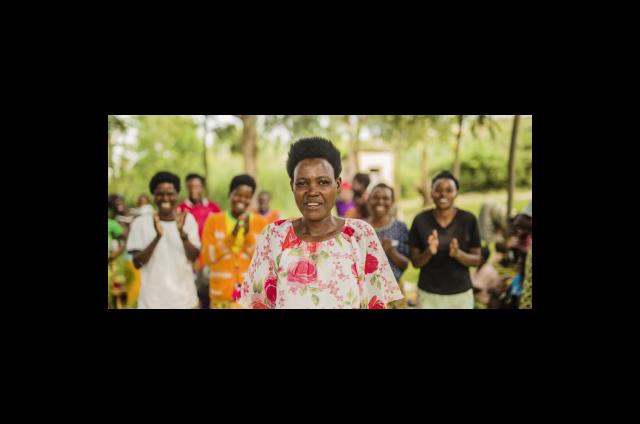Delivering The Global Goals 2017
Goal 1: No Poverty
End poverty in all its forms everywhere.
35% of women report earning at least $1.90 a day
Target 1.1 eradicate extreme poverty
By 2030, eradicate extreme poverty for all people everywhere, currently measured as people living below the international poverty line ($1.90 a day).
Women’s ability to earn money is not only a fundamental economic right but also critical to improving their and their family’s wellbeing. Through our programme, women gain knowledge in small business management and in a vocational skill (e.g. tailoring) that can help them to earn.
35% of graduates of our programme in Afghanistan reported personal earnings of at least $1.90 a day, compared to 9% at enrolment.
Goal 1: No Poverty
End poverty in all its forms everywhere.
46% of women report saving a portion of their earnings
Target 1.5: build resilience to environmental, economic and social disasters
By 2030, build the resilience of the poor and those in vulnerable situations and reduce their exposure and vulnerability to climate-related extreme events and other economic, social and environmental shocks and disasters.
Savings and assets are critical for women and households to cope with economic shocks, by providing a safety net for hard times. For women living in poverty, savings can be seen as an unaffordable luxury. In our programme, women learn how they can save even on a low income.
46% of graduates of our programme in the Afghanistan reported saving a portion of their earnings, compared to 23% at enrolment.
Goal 2: Zero Hunger
End hunger, achieve food security and improved nutrition and promote sustainable agriculture
98% of women report having sufficient food in the house
Target 2.1: universal access to safe and nutritious food
By 2030, end hunger and ensure access by all people, in particular the poor and people in vulnerable situations, including infants, to safe, nutritious and sufficient food all year round.
While women in Afghanistan report having sufficient quantities of food in the house, this does not necessarily speak to food quality. Graduates in Afghanistan have told us that they learnt a lot about nutrition from the programme, with reports of changed household cooking habits.
Upon graduating from our year-long programme, 98% of women reported having enough food in the house in the last four weeks, compared to 97% of women at enrolment.
Goal 3: Good Health and Wellbeing
Ensure healthy lives and promote well-being for all, at all ages.
22% of women report practising family planning
TARGET 3.7: ACCESS TO SEXUAL AND REPRODUCTIVE CARE, FAMILY PLANNING AND EDUCATION
By 2030, ensure universal access to sexual and reproductive health-care services, including for family planning, information and education, and the integration of reproductive health into national strategies and programmes.
In the conservative communities where we work women are denied influence over decision-making, including over their own bodies. Women practicing family planning is a key indicator of women having more awareness and influence over their own bodies.
The number of women on our programme in the Afghanistan who reported practising family planning stayed the same throughout our 12 month programme (at 22%).
Our other data on family planning highlights positive changes in women’s knowledge and decision-making (see Goal 5). Our analysis is that women are still gaining buy-in from their partners to change practice and apply their knowledge.
Goal 4: Quality Education
Ensure inclusive and equitable quality education and promote lifelong learning opportunities for all.
61% OF SCHOOL-AGED GIRLS (5-17 YEARS) IN SCHOOL
Target 4.1: free primary and secondary education
By 2030, ensure that all girls and boys complete free, equitable and quality primary and secondary education leading to relevant and effective learning outcomes.
Many of the women we serve, especially in Afghanistan, have never completed primary school due to discrimination in their communities that undervalue girls and blocks them from opportunities. Increases in education for girls is a positive sign of change across generations.
Women graduates of our programme reported 61% of girls in schools compared to 48% at enrolment.
Goal 5: Gender Equality
Achieve gender equality and empower all women and girls.
65% perceived self-efficacy in women graduates
Target 5.1: end discrimination against women and girls
By 2030, end all forms of discrimination against all women and girls everywhere.
Women gaining confidence is central to their empowerment, believing in themselves and their abilities to participate, engage and affect change for themselves, their families and communities. It is also a positive sign of recovery from trauma and isolation.
The perceived self-efficacy of the women on our programme in the Afghanistan has increased on graduation, from 0.41 (41%) on average to 0.65 (65%) (on a scale of 0-1).
This is a new metric we use to attempt to measure women’s perceptions of self-confidence, future outlook and capacity to follow through with life goals.
Goal 5: Gender Equality
Achieve gender equality and empower all women and girls
65% OF WOMEN REPORT BEING INVOLVED IN DECISIONS ABOUT HAVING MORE CHILDREN
Target 5.6: universal access to reproductive health and rights
By 2030, ensure universal access to sexual and reproductive health and reproductive rights as agreed in accordance with international standards.
In the conservative communities where we work women are denied influence over decision-making, including over their own bodies. Our data highlights an important shift in women’s voices being heard in decision-making which should also lead to positive changes in wellbeing.
65% of women graduates of our programme in Afghanistan reported being involved in decisions about having more children compared to 21% at enrolment.
Goal 8: Decent Work and Economic Growth
Promote inclusive and sustainable economic growth, employment and decent work for all
27% of women reporting employment
Target 8.5: full employment and decent work with equal pay
BY 2030, achieve full and productive employment and decent work for all women and men, including for young people and persons with disabilities, and equal pay for work of equal value.
Women face multiple barriers in accessing employment. For example, in Afghanistan, women’s freedom of movement outside the home tends to be restricted and often dependent on a male chaperone. Yet women’s employment is critical to their economic opportunities.
On graduation of our programme, 27% of women reported employment across all occupation levels - this compared to 6% at enrolment.
Goal 16: Peace, Justice and Strong Institutions
Promote peaceful and inclusive societies for sustainable development, provide access to justice or all and build effective, accountable and inclusive institutions at all levels.
33% of women report having spoken up in public against hitting or slapping women
Target 16.1: reduce violence everywhere
By 2030, significantly reduce all forms of violence and related death rates everywhere.
Conflict and poverty increase women’s vulnerability to all forms of violence, with violence acting as both a consequence and driver of discrimination with women surviving violence being more vulnerable to further abuse.
Over the course of our year-long programme in the Afghanistan, there was an increase in the number of women who reported having spoken out in public against the hitting or slapping of women, from 29% at enrolment to 33% at graduation.
Goal 16: Peace, Justice and Strong Institutions
Promote peaceful and inclusive societies for sustainable development, provide access to justice or all and build effective, accountable and inclusive institutions at all levels.
WOMEN’S ENGAGEMENT WITH NETWORKS REMAINS THE SAME
Target 16.7: ensure responsive, inclusive and representative decision-making
By 2030, ensure responsive, inclusive, participatory and representative decision-making at all levels.
Women’s engagement with groups in their community demonstrates women’s increasing participation. Informal networks are key for providing social and economic support as well as group decision-making skills through elections of committees to manage the group.
The percentage of women (0%) who were a member of a group outside of our training stayed the same throughout the year-long programme in Afghanistan.
At the time of endline data collection, we had not yet hosted formal cooperatives or savings groups for women. Following this point, women have joined informal ‘self-help groups’ through which they have now begun saving money.


